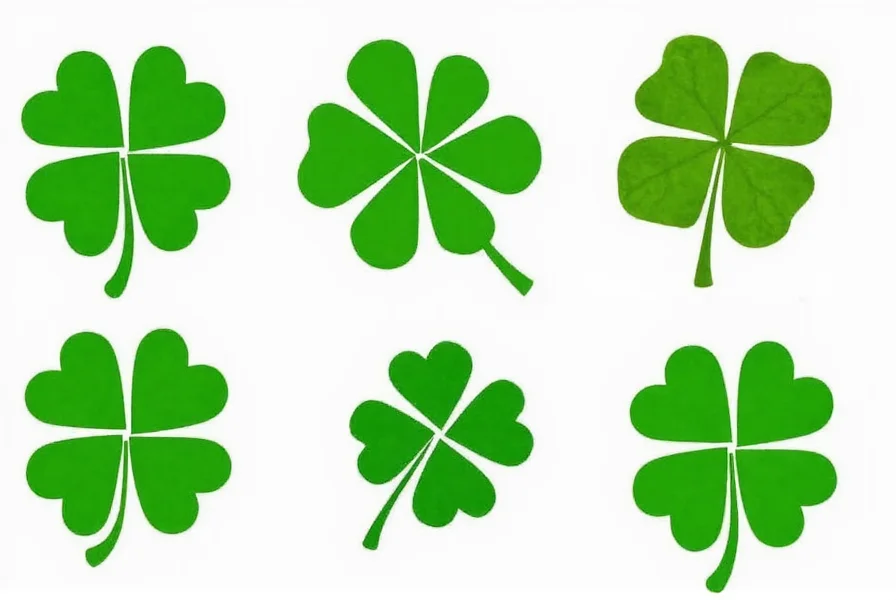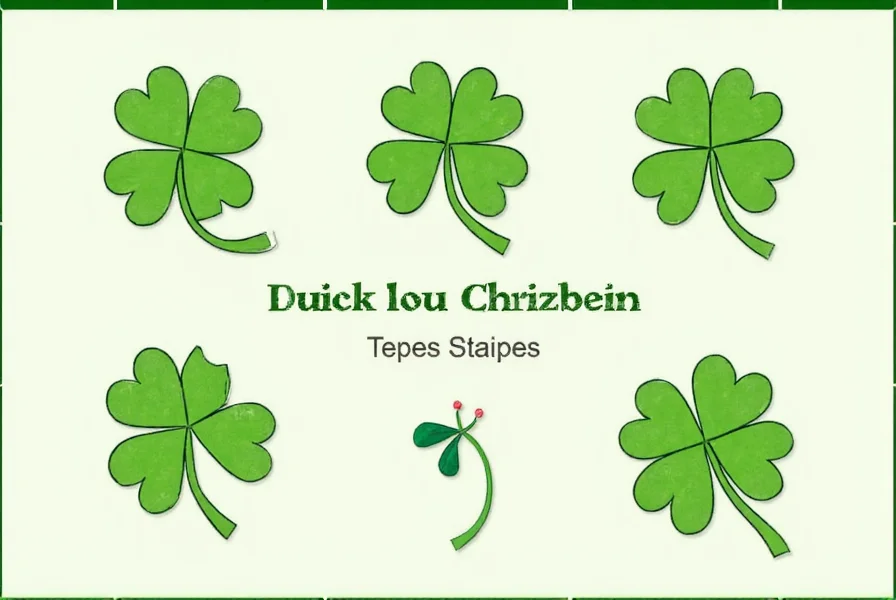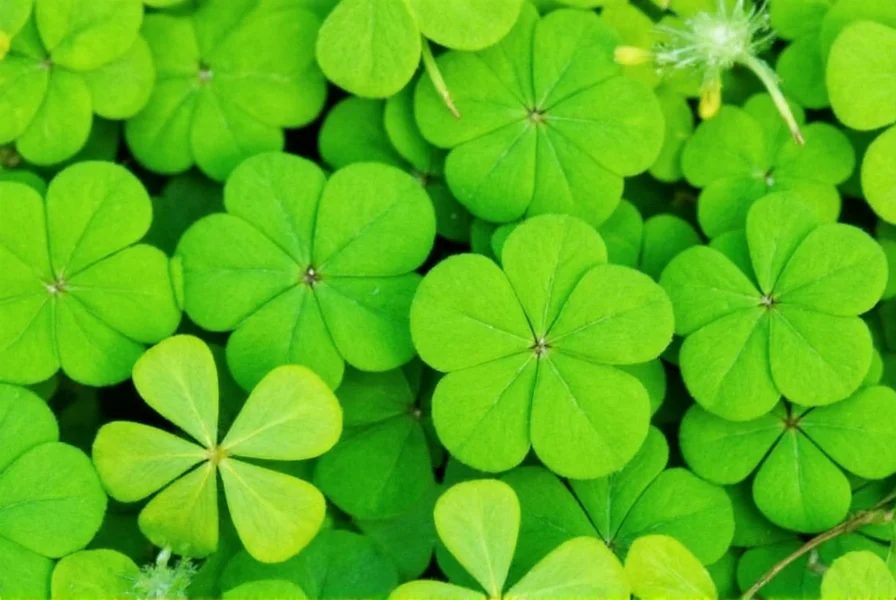Nature enthusiasts and photographers frequently capture clover images to showcase the subtle variations between species that might escape casual observation. These visual records serve both scientific and cultural purposes, documenting botanical characteristics while preserving symbolic meanings passed through generations. Understanding the different types of clover visible in photographs helps with accurate plant identification and appreciation of their ecological roles.
Common Clover Varieties in Photography
When examining clover images, several distinct species appear regularly in botanical photography. Each variety presents unique visual characteristics that aid in proper identification. Recognizing these differences enhances both gardening practices and nature appreciation.
| Clover Type | Visual Characteristics | Frequency in Nature | Common Photography Contexts |
|---|---|---|---|
| White Clover (Trifolium repens) | Three rounded leaflets, white flower heads | Very common | Lawn photography, agricultural studies |
| Red Clover (Trifolium pratense) | Three oval leaflets, purple-pink flower heads | Common | Meadow photography, pollination studies |
| Microclover (Trifolium repens var. Pirouette) | Smaller leaves and flowers than standard white clover | Moderately common | Lawn alternative photography |
| Four-Leaf Clover | Four leaflets instead of three | Approximately 1 in 10,000 | Luck symbolism, special occasion photography |
Scientific Identification Through Clover Photography
High-quality clover images serve as valuable tools for botanical identification. When examining clover photographs, pay attention to specific features that distinguish one species from another. The shape and size of leaflets, presence of markings, flower structure, and growth patterns provide critical identification clues.
White clover images typically show leaves with a distinctive crescent-shaped watermark, while red clover displays more elongated leaflets without this marking. The flower structure differs significantly between species—white clover produces spherical flower heads composed of numerous small florets, whereas red clover creates more elongated, dense flower heads.
Nature photographers often capture close-up images of clover stolons (above-ground stems) to demonstrate growth habits. White clover spreads through these creeping stolons, creating the dense mats commonly seen in lawns, while red clover grows as individual plants with upright stems.

Cultural Significance in Visual Representations
Clover images carry rich symbolic meaning across various cultures. The three-leaf clover represents the Holy Trinity in Christian symbolism, while the rare four-leaf variant has become a universal emblem of good fortune. These symbolic associations influence how clover appears in artistic and commercial imagery.
St. Patrick's Day celebrations prominently feature clover images, particularly the shamrock (which traditionally refers to young clover shoots rather than a specific species). Historical records show that the three-leaf clover's triangular shape made it an effective teaching tool for explaining the concept of the Holy Trinity to early Irish converts.
Photographers often capture clover images during spring and early summer when these plants are in full bloom. The timing connects visually with renewal and growth symbolism. In agricultural photography, clover appears as a valuable cover crop that fixes nitrogen in soil, demonstrating its practical importance beyond symbolism.
Practical Applications of Clover Imagery
Botanists and ecologists utilize clover images for species documentation and environmental monitoring. These visual records help track plant distribution, identify invasive species, and monitor ecosystem health. Gardeners reference clover photographs to distinguish beneficial clover varieties from unwanted weeds.
Educators frequently incorporate clover images into nature study curricula, using the distinctive leaf patterns to teach plant identification and genetics (particularly regarding the four-leaf mutation). The consistent trifoliate structure makes clover an excellent subject for introducing botanical concepts to beginners.
When searching for authentic clover images, look for photographs that clearly show the entire plant structure rather than just isolated leaves. Complete images displaying both foliage and flowers provide more reliable identification information than cropped versions focusing solely on leaf patterns.

Identifying Clover Species from Photographs
Accurate identification from clover images requires attention to multiple characteristics beyond just leaf count. Consider these key features when examining clover photographs:
- Leaf shape and markings: White clover displays rounded leaflets with a distinctive pale crescent, while red clover has more elongated leaflets without this marking
- Flower structure: White clover produces spherical white flower heads, red clover creates pink-purple elongated flower heads
- Growth habit: White clover spreads via creeping stolons, red clover grows as individual upright plants
- Stipule characteristics: The small leaf-like structures at the base of leaf stems differ between species
Misidentification commonly occurs when viewers focus exclusively on leaf count. Many plants resembling clover (such as wood sorrel) actually belong to different plant families. True clovers always belong to the Trifolium genus and display characteristic flower structures that distinguish them from look-alikes.
Frequently Asked Questions
What's the difference between a shamrock and a four-leaf clover?
A shamrock traditionally refers to a young sprig of white clover with three leaves, symbolizing the Holy Trinity in Irish culture. A four-leaf clover is a rare genetic mutation of various clover species where the plant produces four leaflets instead of the usual three. While both come from clover plants, they represent different concepts—one traditional symbolism and one rare variation.
How can I identify white clover in photographs?
White clover in images shows three rounded leaflets with a distinctive pale crescent-shaped watermark on each leaf. The plant produces spherical white flower heads composed of numerous small florets. It grows close to the ground with creeping stolons (above-ground stems) that root at nodes, creating dense mats. The leaves are typically smaller than those of red clover.
Why are four-leaf clovers considered lucky?
The four-leaf clover's rarity (occurring in approximately 1 in 10,000 specimens) contributes to its lucky symbolism. Each leaf traditionally represents a different value: hope, faith, love, and luck. This symbolism became popular in 17th-18th century Europe, where finding a four-leaf clover was believed to grant the ability to see fairies and avoid evil spirits. The mathematical improbability of the mutation enhances its special status.
Are all three-leaf plants clover?
No, many plants resemble clover but belong to different species. Wood sorrel (Oxalis) is commonly mistaken for clover but belongs to a different plant family. True clovers (Trifolium species) have characteristic flower structures that distinguish them—white clover produces spherical white flower heads while red clover creates pink-purple elongated flower heads. Always examine both leaves and flowers for accurate identification.
What's the best time to photograph clover?
The optimal time for clover photography is during spring and early summer when most species are in full bloom. Morning light provides the softest illumination for capturing delicate flower structures and leaf textures. For white clover, late spring through early summer offers the most abundant flowering. Red clover typically blooms slightly later, from early to mid-summer. Avoid midday sun which creates harsh shadows that obscure botanical details.











 浙公网安备
33010002000092号
浙公网安备
33010002000092号 浙B2-20120091-4
浙B2-20120091-4